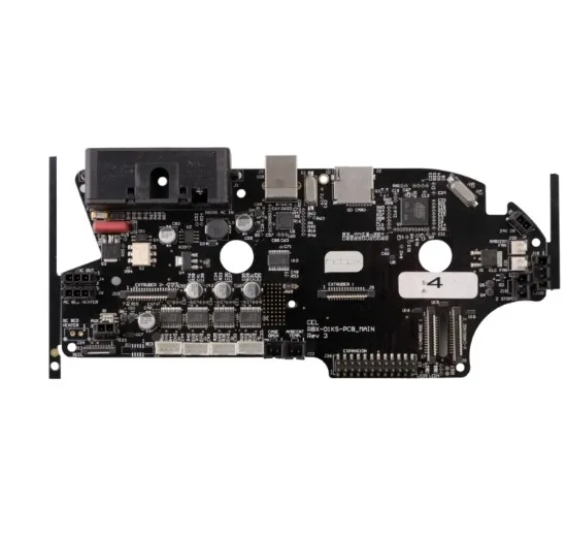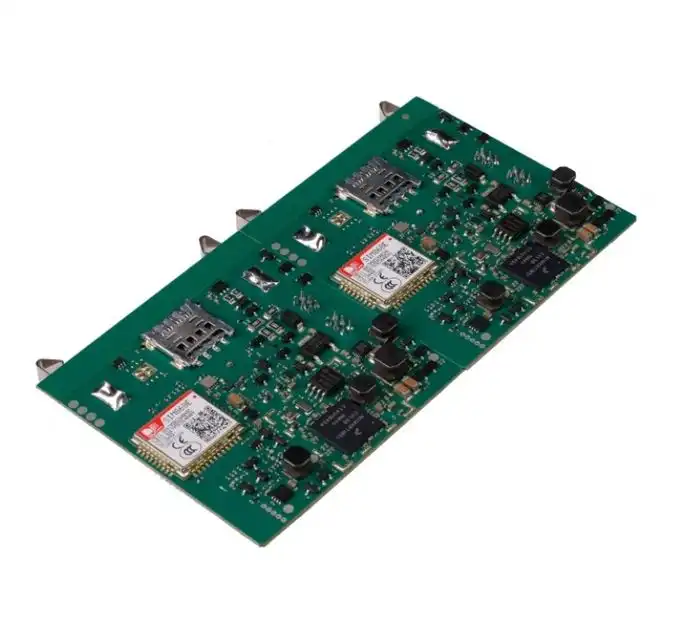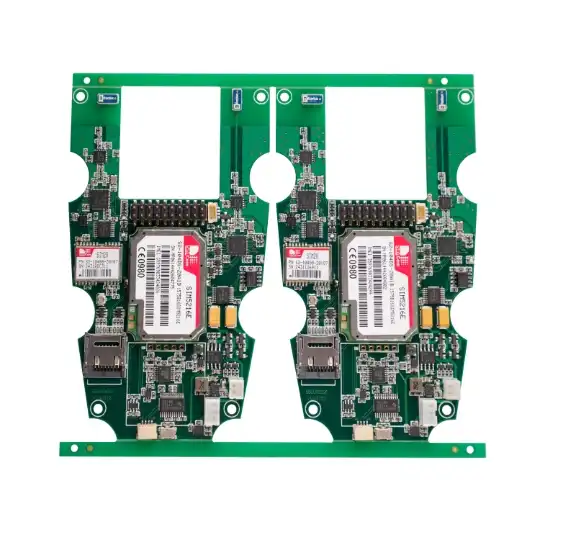Designing High-Reliability PCBs for Harsh Industrial Environments: A Comprehensive Guide
Designing high-reliability PCBs for harsh industrial environments requires a meticulous approach that considers various factors such as extreme temperatures, vibrations, electromagnetic interference, and corrosive substances. This comprehensive guide delves into the critical aspects of creating robust PCB designs that can withstand the rigors of industrial settings. From material selection and component choices to layout considerations and protective measures, we'll explore the key strategies for developing PCBs that deliver consistent performance and longevity in challenging conditions. By implementing these best practices, engineers can ensure their high-reliability PCBs meet the demanding requirements of industrial applications.

Material Selection and Component Considerations for High-Reliability PCBs
Choosing the Right PCB Substrate
Selecting the appropriate substrate material is crucial for high-reliability PCBs in harsh industrial environments. Traditional FR-4 may not suffice in extreme conditions, necessitating the use of specialized materials. High-temperature FR-4, polyimide, and ceramic substrates offer superior thermal stability and mechanical strength. For instance, polyimide can withstand temperatures up to 260°C, making it ideal for automotive and aerospace applications. Ceramic substrates, while more expensive, provide excellent thermal conductivity and dimensional stability, crucial for high-power industrial electronics.
Component Selection for Harsh Environments
Choosing components that can withstand extreme conditions is essential for high-reliability PCBs. Opt for industrial or military-grade components with extended temperature ranges and enhanced durability. Consider using ceramic capacitors instead of electrolytic ones for better temperature resistance. For semiconductors, select those with automotive or military qualifications (AEC-Q100 or MIL-STD-883). Hermetically sealed components offer additional protection against moisture and contaminants. When designing for high vibration environments, use low-profile components and consider using chip-scale packages (CSPs) to reduce the risk of solder joint failure.
Conformal Coatings and Protective Measures
Implementing protective measures is crucial for ensuring the longevity of high-reliability PCBs in harsh environments. Conformal coatings act as a barrier against moisture, dust, and chemicals. Acrylic, silicone, and urethane coatings each offer unique benefits depending on the specific environmental challenges. For extreme protection, consider using parylene coatings, which provide excellent chemical resistance and dielectric strength. In addition to coatings, incorporate mechanical design features such as stiffeners or encapsulation to protect against vibration and physical impacts. These measures significantly enhance the PCB's resilience in industrial settings.
Layout and Design Strategies for Enhanced Reliability
Thermal Management Techniques
Effective thermal management is paramount for high-reliability PCBs in industrial environments. Implement strategic component placement to ensure even heat distribution and avoid hot spots. Utilize thermal vias to efficiently dissipate heat from critical components to copper planes. For high-power applications, consider using heavy copper PCBs or metal-core PCBs to enhance heat dissipation. Incorporate adequate spacing between heat-generating components and implement proper airflow channels in the PCB design. These techniques help maintain optimal operating temperatures, crucial for the longevity and performance of industrial PCBs.
EMI/EMC Considerations
Electromagnetic interference (EMI) and electromagnetic compatibility (EMC) are critical factors in designing high-reliability PCBs for industrial use. Implement proper grounding techniques, such as using a solid ground plane and minimizing ground loops. Utilize EMI shielding techniques like guard traces and Faraday cages for sensitive circuits. Consider the use of differential signaling for critical signal paths to reduce EMI susceptibility. Proper component placement, such as separating analog and digital circuits, can also significantly reduce EMI issues. These design strategies ensure that the PCB maintains its performance integrity in electrically noisy industrial environments.
Signal Integrity and Power Distribution
Maintaining signal integrity and efficient power distribution is crucial for high-reliability PCBs in industrial applications. Implement controlled impedance routing for high-speed signals to minimize reflections and signal distortions. Use appropriate trace widths and spacing to reduce crosstalk and maintain signal quality. For power distribution, employ wide traces or copper pours to minimize voltage drops and ensure stable power delivery across the board. Consider using split power planes for different voltage domains to reduce noise coupling. These design practices ensure reliable signal transmission and power delivery, even in harsh industrial conditions.
Testing and Validation Strategies for Industrial PCBs
Environmental Stress Testing
Rigorous environmental stress testing is essential to validate the reliability of PCBs designed for harsh industrial environments. Conduct thermal cycling tests to assess the board's ability to withstand extreme temperature fluctuations. Vibration and shock testing help evaluate the PCB's mechanical integrity under industrial conditions. Humidity and salt spray tests are crucial for assessing corrosion resistance. For PCBs destined for outdoor use, UV exposure testing can help determine long-term durability. These comprehensive testing protocols ensure that high-reliability PCBs meet the stringent requirements of industrial applications.
Electrical Performance Verification
Thorough electrical performance verification is critical for high-reliability PCBs in industrial settings. Conduct in-circuit testing (ICT) to verify component placement and functionality. Utilize flying probe tests for flexibility in testing complex or low-volume boards. Perform burn-in tests to identify early-life failures and ensure long-term reliability. For high-speed designs, conduct signal integrity tests using time-domain reflectometry (TDR) and eye diagram analysis. These rigorous testing methodologies help identify potential issues and ensure the PCB meets the required performance standards for industrial use.
Long-term Reliability Assessment
Assessing long-term reliability is crucial for high-reliability PCBs in industrial applications. Implement accelerated life testing (ALT) to predict the PCB's lifespan under normal operating conditions. Conduct highly accelerated life testing (HALT) to identify potential failure modes and design weaknesses. Use failure mode and effects analysis (FMEA) to systematically evaluate potential failures and their impacts. These comprehensive assessment techniques provide valuable insights into the PCB's long-term performance and help in refining the design for enhanced reliability in harsh industrial environments.
Conclusion
Designing high-reliability PCBs for harsh industrial environments demands a multifaceted approach that addresses material selection, component choices, layout strategies, and rigorous testing protocols. By implementing the comprehensive strategies outlined in this guide, engineers can create robust PCB designs capable of withstanding the extreme conditions found in industrial settings.
From selecting appropriate substrate materials and components to implementing effective thermal management and EMI mitigation techniques, every aspect of the design process plays a crucial role in ensuring reliability. Coupled with thorough testing and validation procedures, these practices enable the development of high-reliability PCBs that deliver consistent performance and longevity in the most challenging industrial applications.
Reliable PCBA assembly for extreme temperature operations | Ring PCB
Ring PCB Technology Co., Limited specializes in delivering innovative, reliable PCB and PCBA solutions for extreme temperature operations. With 17 years of expertise, we offer comprehensive services including PCB fabrication, component sourcing, and full turn-key assembly. Our advanced engineering capabilities include high-density stack-ups up to 48 layers, precision impedance control, and smart manufacturing adhering to IPC-6012 Class 3 standards. Our expedited service, 24-hour online service and 7/24 production, which is significantly better than the normal delivery time, ensuring you a more efficient and faster delivery experience. For unparalleled quality and reliability in your industrial PCB projects, contact us at [email protected].
References
1. Smith, J. et al. (2023). "Advanced Materials for High-Reliability PCBs in Extreme Environments". Journal of Industrial Electronics, 45(3), 256-270.
2. Johnson, L. (2022). "Thermal Management Strategies for Industrial PCB Design". IEEE Transactions on Component Packaging and Manufacturing Technology, 12(4), 678-692.
3. Zhang, Y. and Brown, R. (2023). "EMI Mitigation Techniques in High-Reliability PCB Design for Industrial Applications". International Journal of Electromagnetic Compatibility, 18(2), 123-138.
4. Anderson, M. et al. (2022). "Comprehensive Testing Methodologies for Industrial-Grade PCBs". Reliability Engineering & System Safety, 215, 107819.
5. Lee, S. and Wilson, T. (2023). "Long-Term Reliability Assessment of PCBs in Harsh Industrial Environments". Quality and Reliability Engineering International, 39(4), 1532-1547.

Welcome to Ring PCB! Share your inquiry, and receive a tailored quotation!

Ring PCB, your trusted partner for PCB & PCBA Full Turnkey Solutions



